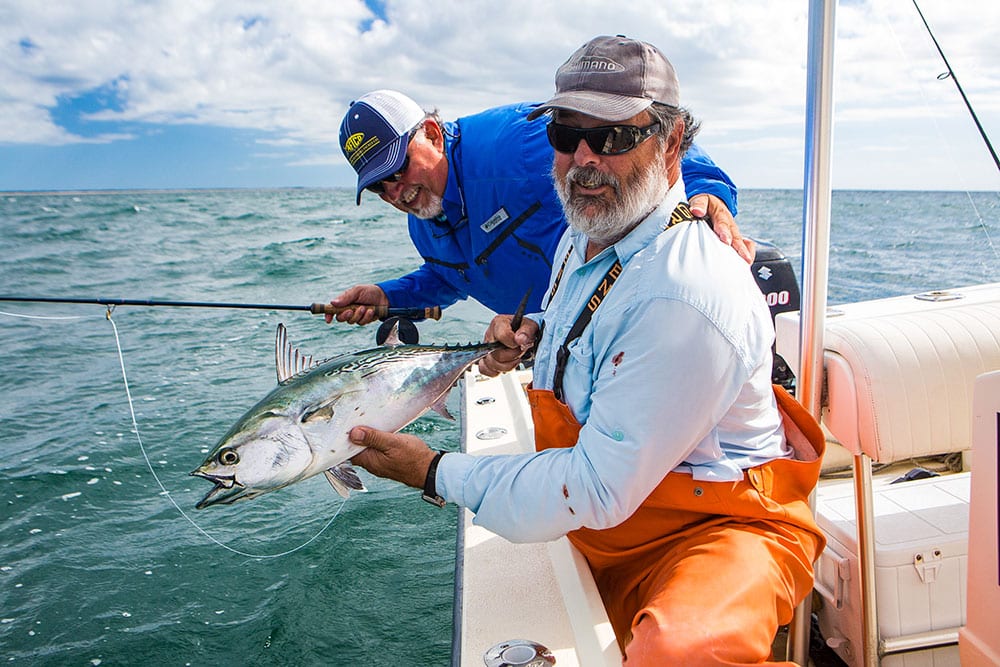
Every year, in late summer and early fall, hordes of speedy little tunny, aka bonito in Florida and false albacore (albies for short) in Mid-Atlantic and Northeast states, terrorize baitfish schooling near shore, along the eastern Gulf of Mexico and up the Atlantic coast, affording fly anglers ample opportunity for exciting nearshore action.
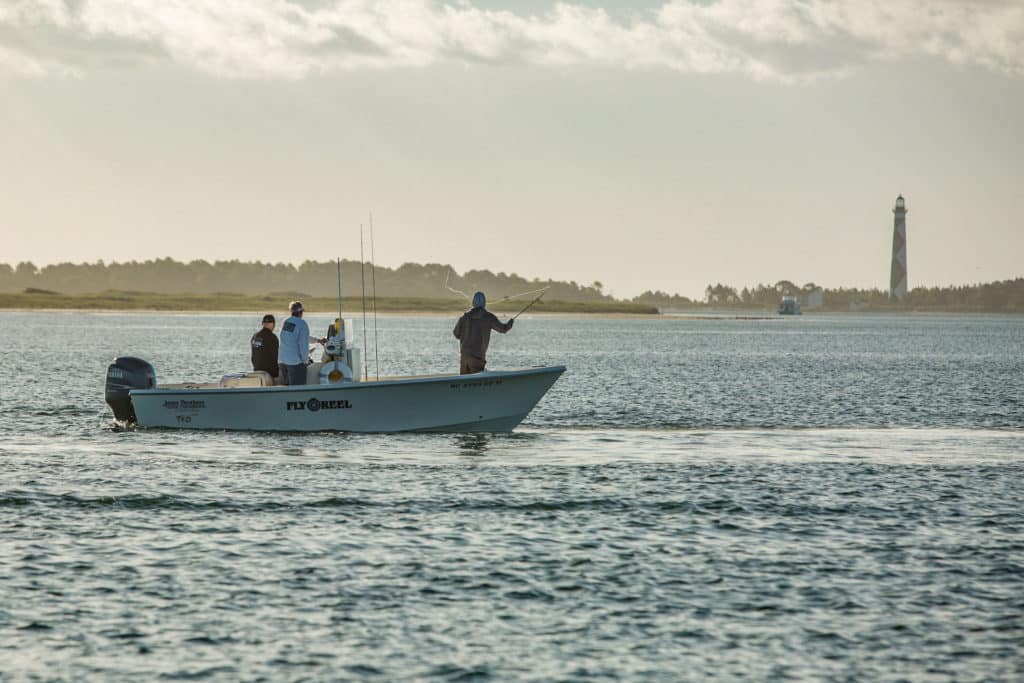
Carolina Style
Last September, while on assignment in North Carolina’s Crystal Coast, I had the chance to fish with Capt. Joe Shute just as a dip in temperature — accompanied by strong northerly winds — signaled the imminent arrival of fall. The moment we cleared Beaufort Inlet, the veteran guide turned left and had his Parker cruising along Shackleford Banks en route to our first stop of the day, all the while scanning the surf for signs of feeding albies. “The Hook ought to be good this morning, with the wind blowing like it is,” he said, referring to Cape Lookout, a spit of land shaped like a fish hook that creates a natural pocket where baitfish congregate, shielded from stiff breezes blowing from virtually any direction.
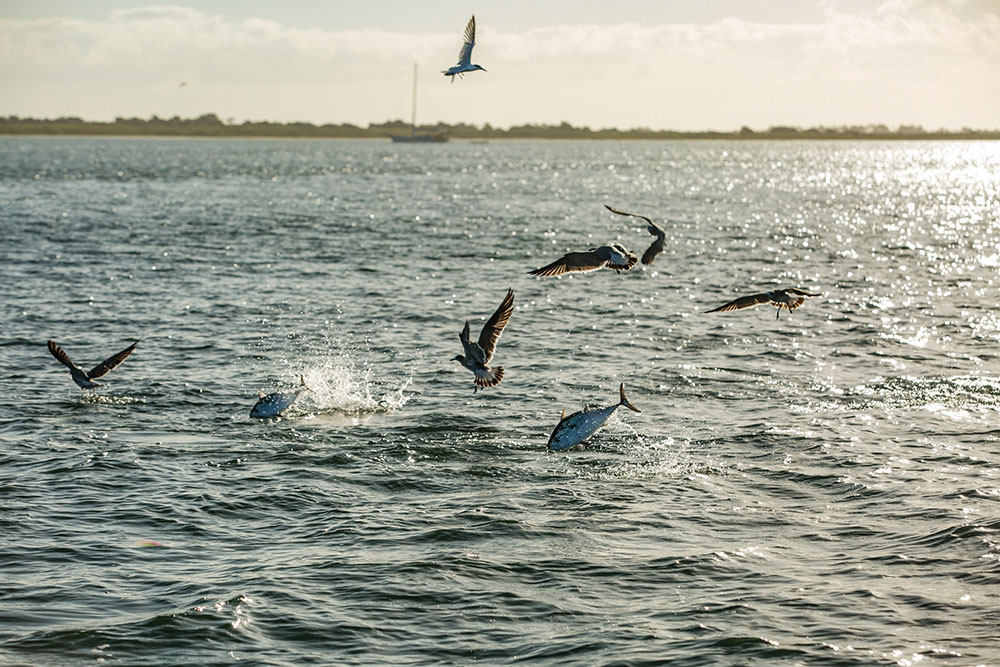
Sure enough, as we entered Lookout Bight, the surface was flat calm. That is, except for the pods of silversides frantically jumping out of the water, and the green torpedoes right on their trail. Wolf packs of albies, expertly applied their guerrilla tactics, embarking in brief skirmishes and disappearing just long enough to let the bait regroup before launching the next attack.
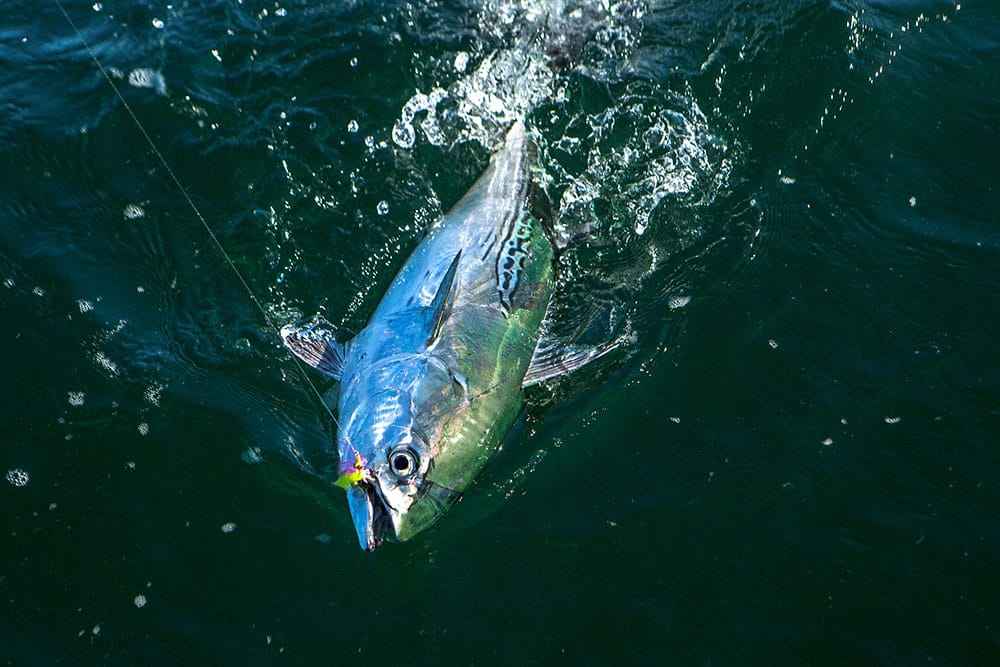
Hook, Release, Repeat
Three other boats were already on the scene, two of them with anglers hooked up at the bow. Soon, feeding little tunny materialized within casting range, so I sent a Clouser Minnow in the direction of the melee, tucked the rod in my left armpit, and stripped the fly line at a fast clip with both hands. My fly hadn’t traveled 15 feet when a football-shaped 7-pounder claimed it and peeled line from my whining reel. After a spirited fight on an 8-weight outfit that lasted just under 10 minutes, the speedster was welcomed aboard for a quick snap shot and hook removal, before it was dropped back in the drink head first.
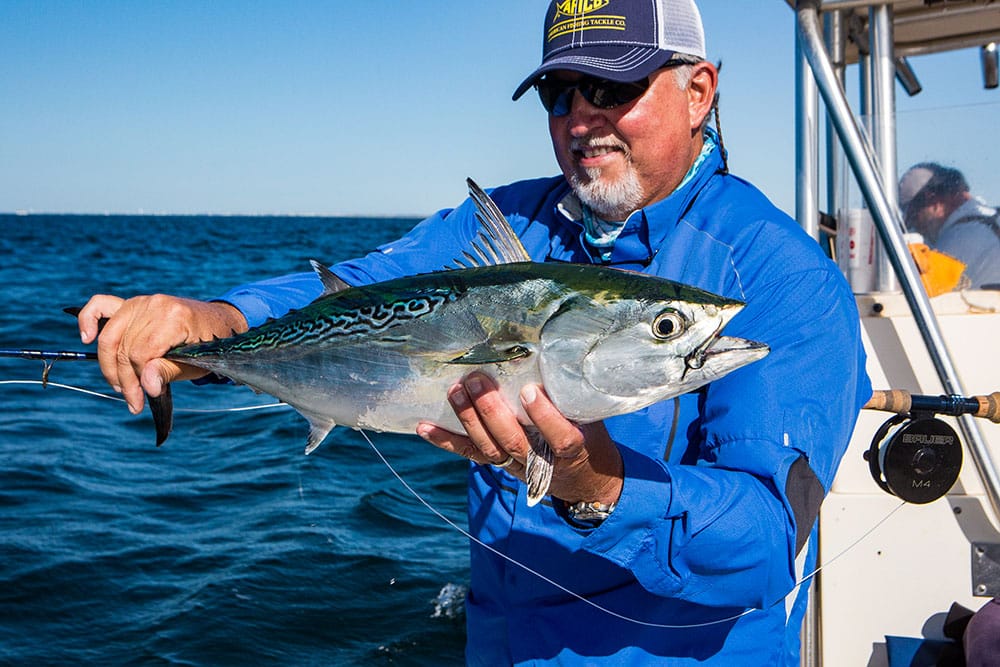
The action at Cape Lookout was fast but intermittent, and we spent more time chasing short-lived flurries than fighting fish. Nevertheless, we landed 5 or 6 fish, and pulled the hook on two or 3 others in the couple of hours it took for the albies to shut down.
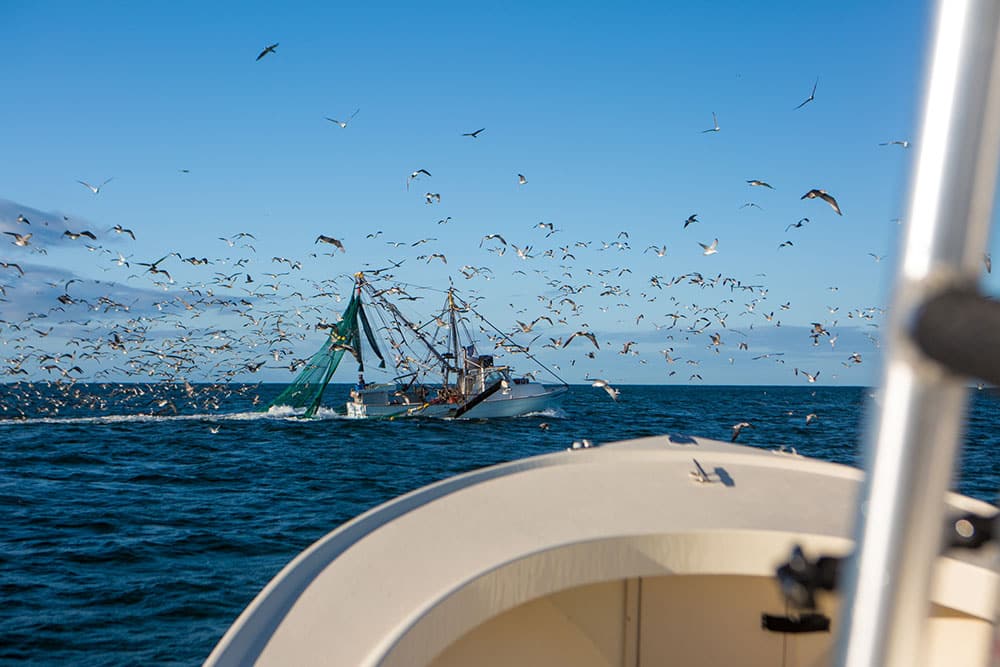
Looking for Shrimpers
Once the fish quit biting at the Hook, Shute ran back toward Beaufort Inlet and moved out, about a mile and a half off the beach, to look for shrimp boats trawling. He picked out one with birds hovering all over its wake, and quickly approached, instructing me to cast and let the fly sink a bit before stripping. My third cast was rewarded with a strike, and the fight was on. It turns out, however, that albies weren’t the only ones lurking around the shrimpers, looking for an easy meal. Spinner sharks, some weighing as much as 150 pounds, were also plentiful and ready to chomp on any hooked albie they could get to before it reached the boat.
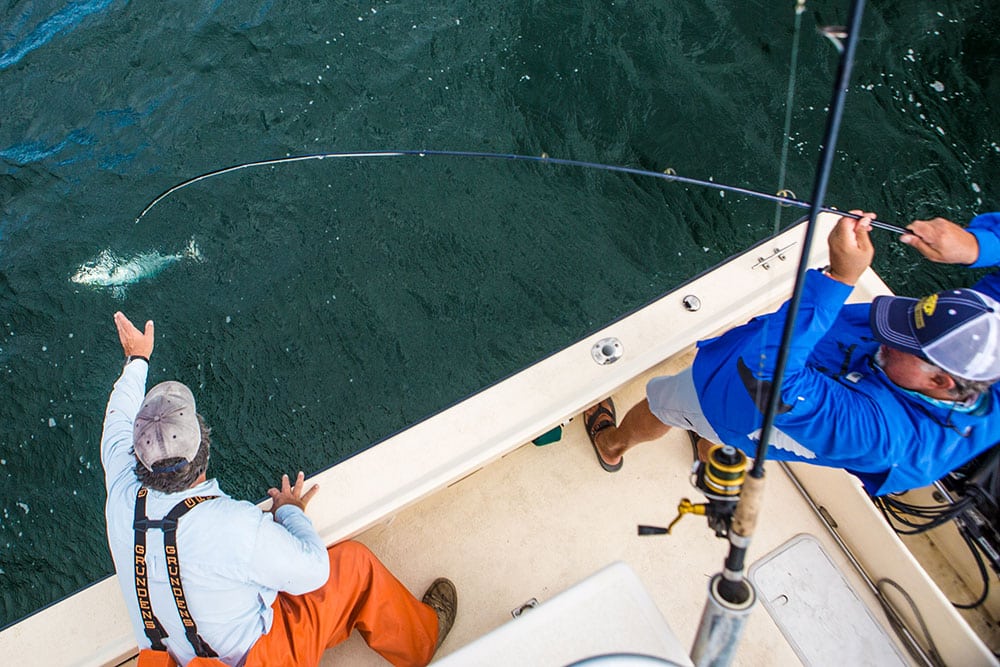
That added urgency to our efforts to land the fish and release them quickly. But with Shute chasing down a few of the ones we hooked, and revving up the outboard during the landings to keep the sharks at bay, we tallied another half dozen releases over the next hour, losing only one albie to a spinner.
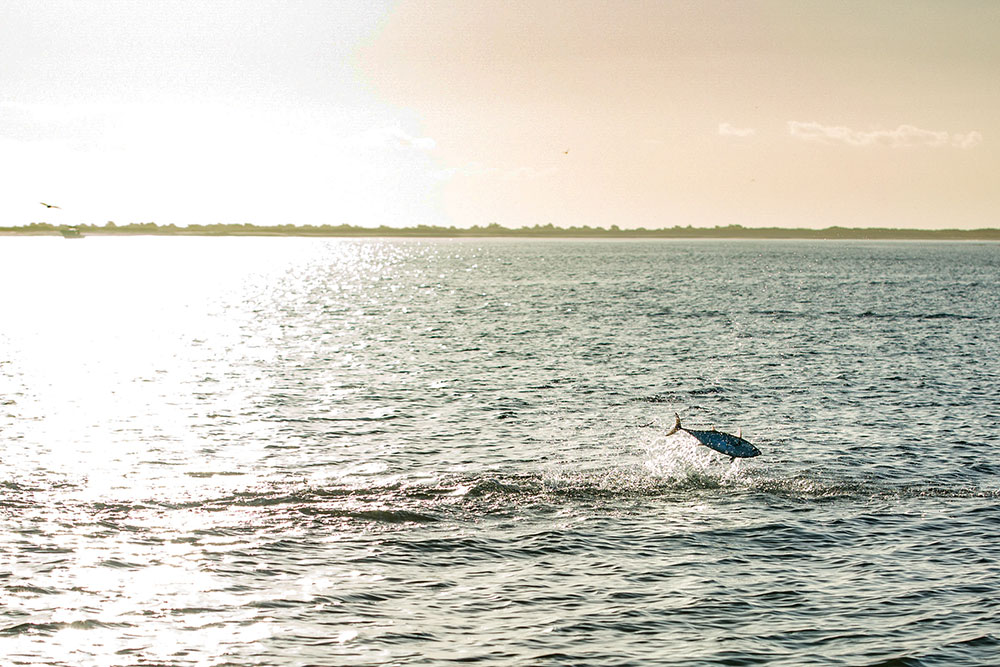
Gulf Tactics
In Florida, where most anglers refer to albies as bonito, fishing around shrimp boats is also an effective game plan. But dredge holes off the beaches, and the mouths of inlets and passes, where baitfish tend to gather, are also productive locations for fly rodders intent on picking fights with little tunny, and chumming — either with frozen chum and small chunks, or with live pilchards, sardines or threadfin herring — is sometimes used to draw the fish withing casting range and keep them chewing.
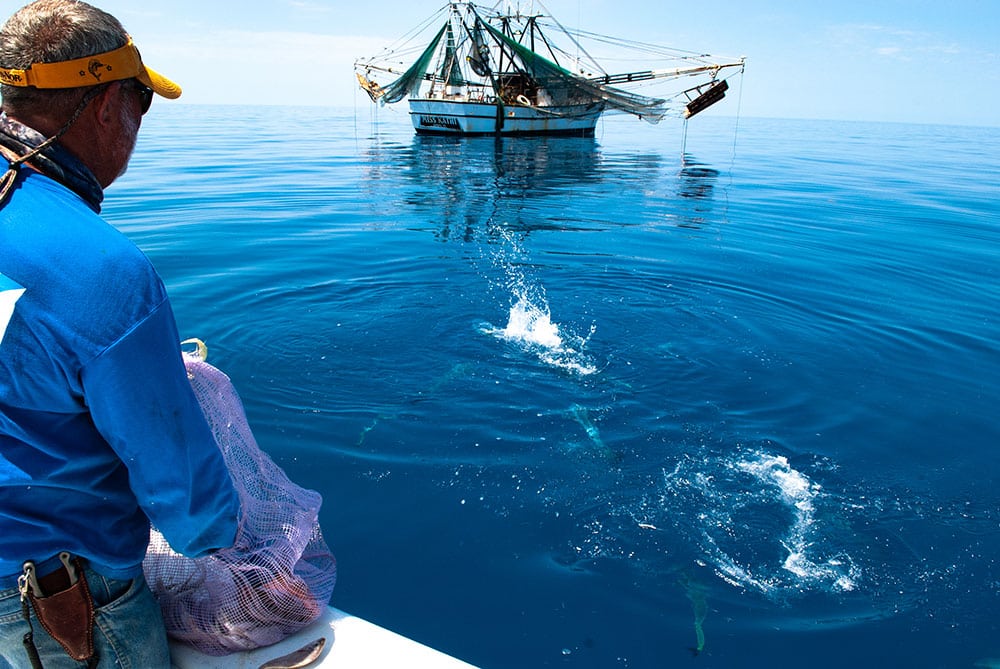
Small baitfish imitations are in order when you chum with liveys. But if you opt for chumming with chunks, a simple white marabou or bucktail fly (with a bit of flash) of similar size and fished on a clear, intermidate-sink line is the ticket. Just cast the fly and let it drift down slowly, feeding loose line out for a more natural presentation. And be ready to set the hook as soon as the line comes tight, otherwise the fish will have enough time to realize it’s been duped, and spit out the fly.
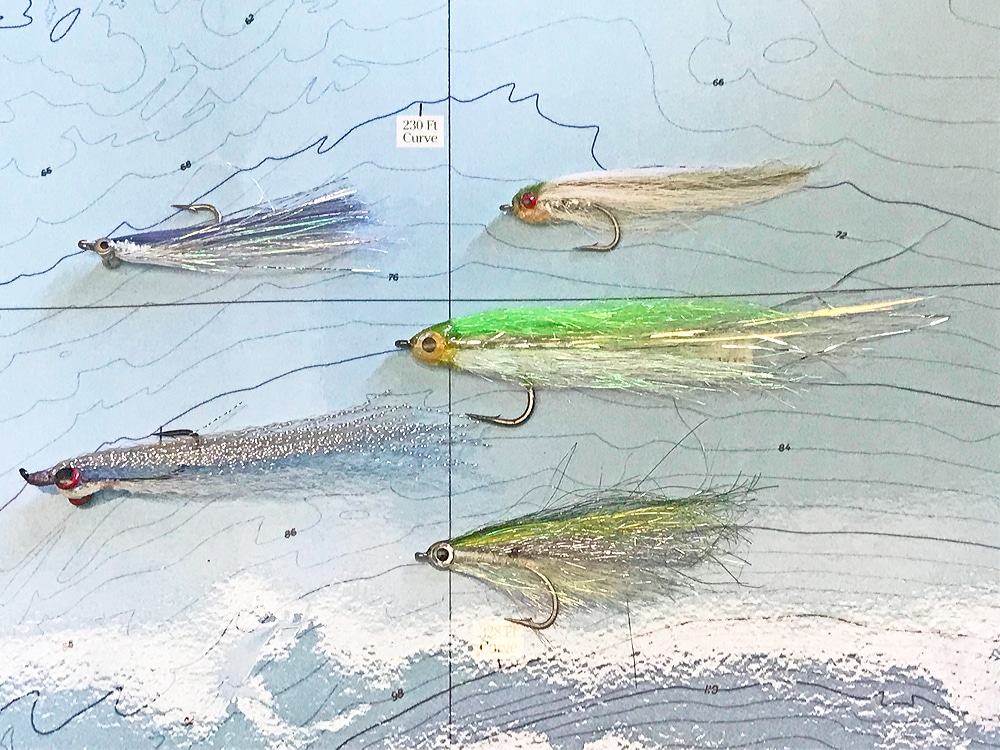
Downsizing
In September and October, the left coast of the Sunshine State is peppered with clouds of glass minnows, from a few yards off the beach to about three miles out, and bonito dart in and out of the schools, feasting on the diminutive baitfish. Then, small, sparsely-tied Clousers, Gummy Minnows, and even Crazy Charlies intended for bonefish, are most effective. But rather than cast your fly right into a school of thousands of glass minnows, place it on the outskirts, where it’s more likely to be singled out by a bonito.
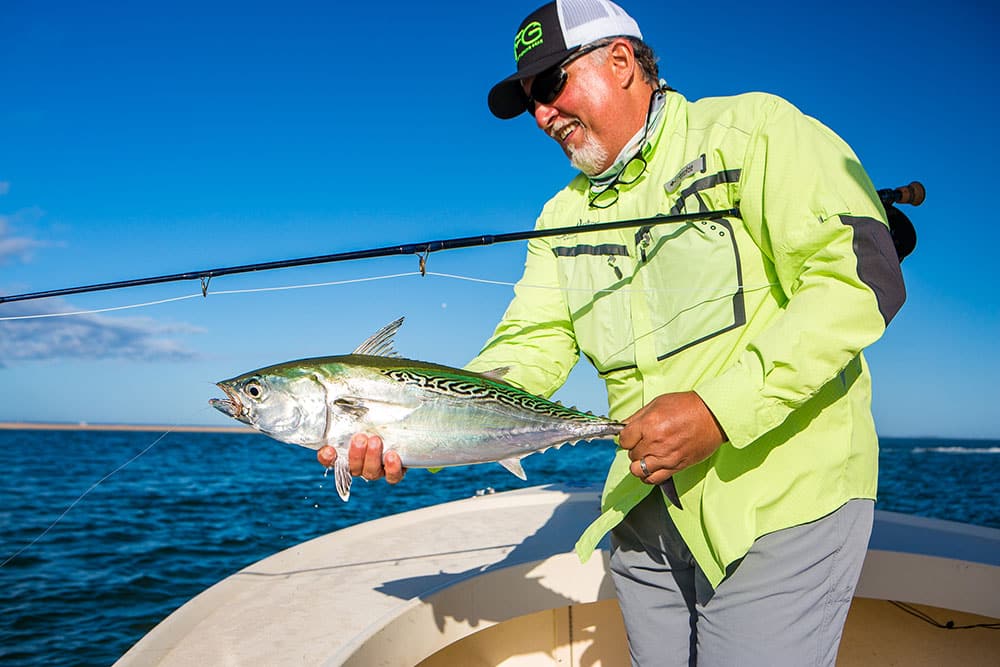
Fly Line Choices
While a floating, weight-forward line like a saltwater taper is well suited for most false albacore situations, a second outfit with a clear, intermediate-sink line often comes in handy in clear water during sunny days, or when chumming with chunks, which calls for letting the fly sink slowly without imparting any action to it.
In addition, there are special occasions when a fast-sinking shooting head setup excels. When the fish attack a bait school from below and refuse to come near the surface, for instance, or when you need to punch the fly into a strong wind and get it down past the surface chop quickly to get in on the action.
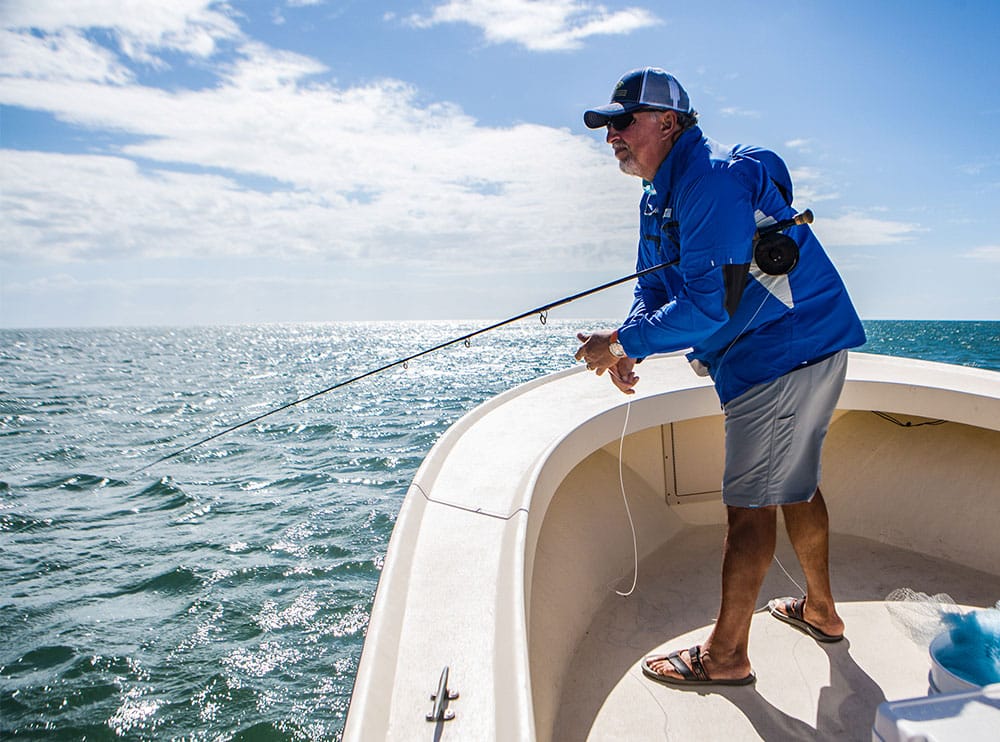
Stripping Cadence
A quick and steady retrieve, with little or no erratic action, seems to work best for frenzied albies, as the fly mimics a panicked prey doing its darnest to flee, which not only gets the attention of the fish, but also often triggers reaction strikes. Stripping the line with both hands enables you to achieve the necessary speed and cadence more easily.
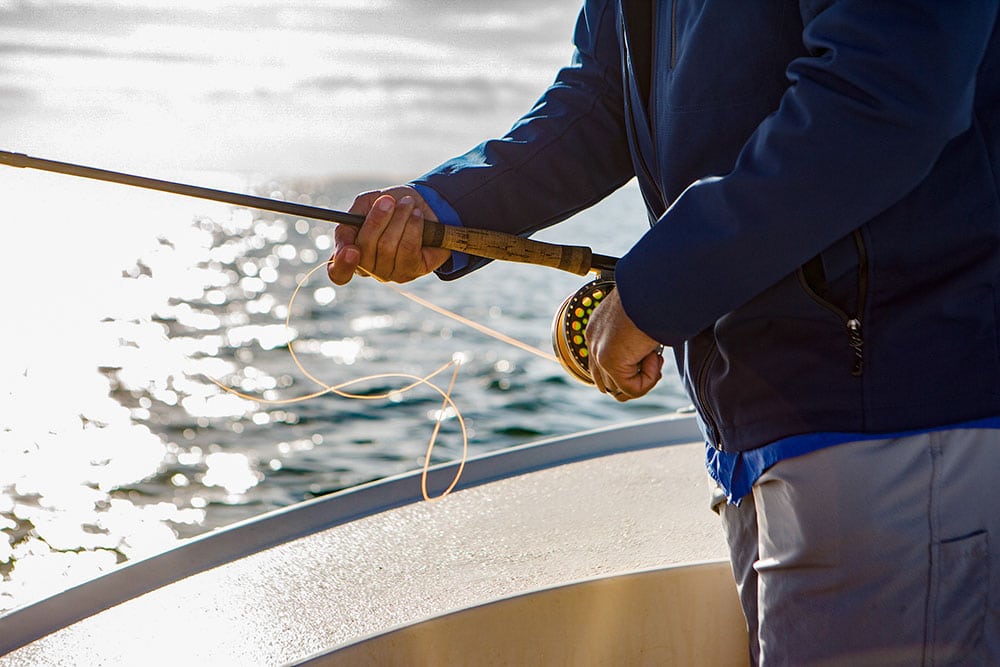
Line Management is Key
If you need practice clearing your fly line before next tarpon season or an upcoming big-game expedition, go target false albacore a couple of times. The agile little tunny really force you to get your line management down. Once you set the hook, your allowed reaction time to usher loose line through the rod guides before it comes tight is usually quite short, so play it safe and carry extra flies and a number of previously tied spare leaders with a loop on the butt end to replace any broken ones in a jiffy.
When it’s windy, by the way, it makes things easier to only pull off your reel a few more feet of line than you realistically can cast under the existing conditions, and to keep the coils constrained in a tall stripping bucket or a trash can.
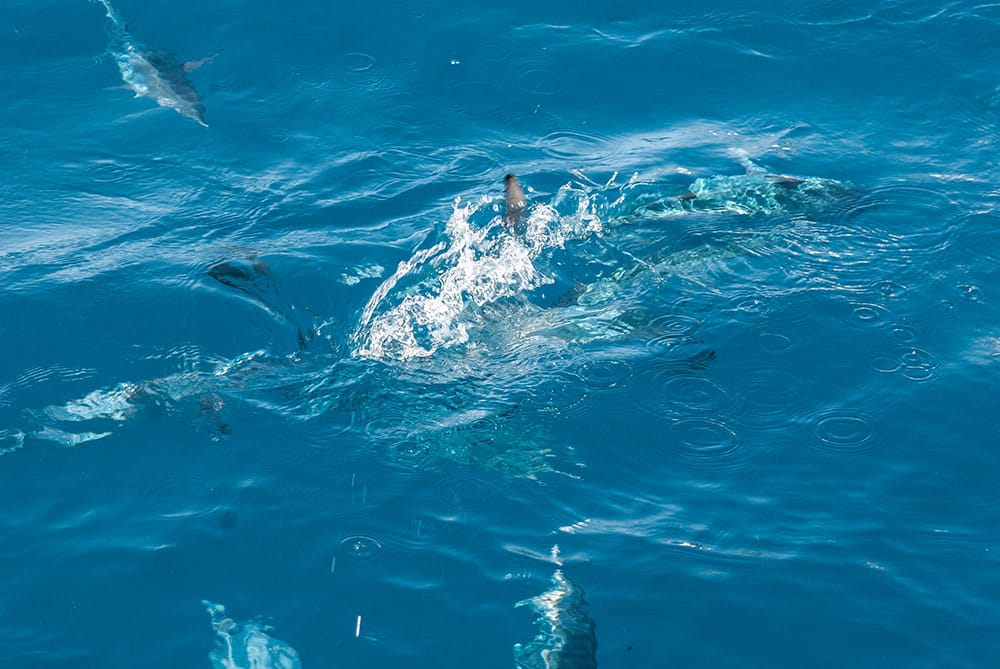
Recommended Leaders
A standard 9-foot leader ending with 15-pound tippet is a good all-around choice, but it pays to carry a few 12- and 10-pound for those times when you’re fishing in clear water, under a bright sun, using a small fly to match the glass minnows or whatever other tiny fry albies happen to be feeding on.
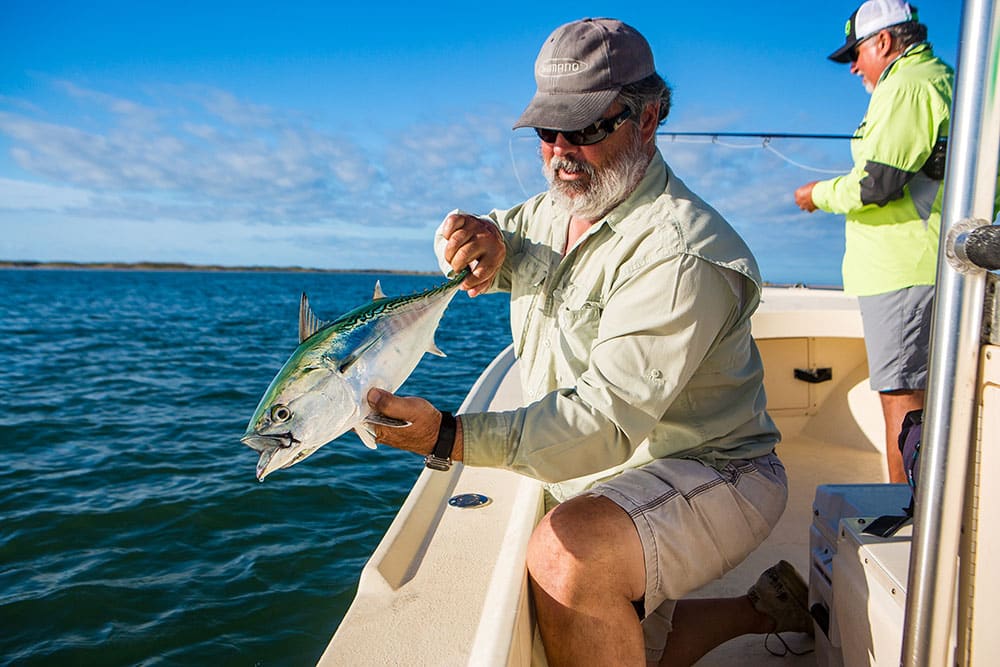
Matched Fly Tackle
Although false albacore are strong fighters known for their long, fast runs, most run in the 6- to 10-pound class, and a 7- or 8-weight outfit will handle them nicely. I usually carry a 9-weight as well, for those times when sharks are a nuisance and it’s a must to get a hooked fish in quickly. In Florida, where I live, we often encounter 12- to 15-pounders, and even a few up to 18-pounds now and then, so the heavier outfit gets its share of use.
A fast-action fly rod is highly recommended. It’s ideal for casting a tight loop into the wind, often necessary during the fall. But make sure it also has some backbone to pull sounding albies up to the surface. As for the reel, you need nothing fancy, just a smooth drag and enough capacity for the full fly line plus 150 yards of backing.









